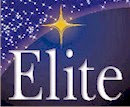 This week's Elite Expert is Dan Crowder. With us since 1989, Dan is Elite's Certification Department Supervisor, FCC/CE Mark Team Leader, iNarte® Certified EMC Engineer, and one of our Sr. EMC Engineers. His areas of expertise include transmitter certification and
testing for US and foreign markets, FCC testing and regulations, CE
Marking, and international compliance regulations. As an internal
auditor for Elite’s quality assurance team, he assists with the
administration of Elite’s ISO 17025 quality system and ISO Guide 65
certification systems. Finally, Dan is actively involved in transmitter standards
development--including ANSI C63.10 and ANSI C63.26, the
Telecommunication Certification Body Council, and the IEEE EMC Society. Read below to see what he has for us today.
This week's Elite Expert is Dan Crowder. With us since 1989, Dan is Elite's Certification Department Supervisor, FCC/CE Mark Team Leader, iNarte® Certified EMC Engineer, and one of our Sr. EMC Engineers. His areas of expertise include transmitter certification and
testing for US and foreign markets, FCC testing and regulations, CE
Marking, and international compliance regulations. As an internal
auditor for Elite’s quality assurance team, he assists with the
administration of Elite’s ISO 17025 quality system and ISO Guide 65
certification systems. Finally, Dan is actively involved in transmitter standards
development--including ANSI C63.10 and ANSI C63.26, the
Telecommunication Certification Body Council, and the IEEE EMC Society. Read below to see what he has for us today.
The purpose of ISO/IEC 17065 is for conformity assessment or the certification of products, processes and/or services. More than any
other type of conformity assessment activity, product/process/service
certification is primarily focused on the establishment of confidence in the certified
products, processes or services. The users of goods and services that carry
formal certification marks are much less interested in the process of
certification than in its results.
Overview of certification:
ISO/IEC 17065 articulates the process of certification to
contain the 5 steps pictured below. These five steps underpin all certification
processes and therefore, the management system that supports them (in ISO/IEC
17065) is geared towards allowing the certification body to issue certificates
that enhance trust in the safety and performance of the products examined.
Understanding Impartiality:
The concept of impartiality is the following: decisions
made for certification are based solely on the defined merits or criteria
related to the object of certification (product, service or process), or its
operation, or some other aspect related to it. Only those things can be used in
the certification decision – nothing else, and certainly nothing related to the
decision maker.
Conflict of interest is the notion that something other
than those defined merits or criteria are influencing the decisions related to
that thing. People or organizations are deemed to be in conflict of interest
when they are associated with any condition or organization that might have an
interest in influencing the outcome of the decisions. Rock solid demonstrations
of impartiality require the CB to ensure that its own staff are not involved in
any aspect of ownership, design, manufacture, or other relationship as regards
the object of certification or its manufacturer / supplier. It requires that
all sub-contracted organizations that participate in the evaluation processes
also are visibly free of such conflicts. ISO/IEC 17065, cl 7.6.2 requires that
all persons involved in the review and decision must be independent of the
evaluation.
Do you have any questions about certification or other related topics? Share your comments or questions below and our expert, Dan Crowder, will get back to you.
Do you have any questions about certification or other related topics? Share your comments or questions below and our expert, Dan Crowder, will get back to you.









